September 2022
When Jack Barkowski started his career as a construction worker, installing flooring and roofing near Boston, Massachusetts, he felt lost. A college drop-out whose plans of playing football while earning a degree in economics ended abruptly due to an injury, Barkowski needed a new direction in life. Fond memories of exploring the salt marshes of the Neponset River as a child led him to consider enrolling in the environmental science program at University of Massachusetts, Boston.
Fast-forward five years and one environmental science degree, and Barkowski’s new career as a marine scientist has already taken him from Namibia to Alaska and many places in between. Today, Barkowski spends most of his time in Monterey Bay, California, studying humpback whale vocalizations. Barkowski is a collaborator on a project called SanctSound, a four-year effort led by NOAA, the U.S. Navy, and over 20 partner organizations to better understand the underwater soundscape of the National Marine Sanctuary System. Over the last four years, the SanctSound team has been able to gather a wealth of data on the sounds heard in seven national marine sanctuaries and one marine national monument. "The SanctSound project was only possible through the collaboration of dozens of people, working together to collect, analyze, and present a massive amount of acoustic data,” says Barkowski.
The Where and How of Humpback Song
Off the rocky and remote shores of Washington’s Olympic Peninsula, in Olympic Coast National Marine Sanctuary, SanctSound recordings captured one of the most beautiful and mysterious sounds in the ocean: humpback whale song. This data has provided scientists like Barkowski an exciting opportunity to learn more about the humpback whales that frequent the sanctuary. Marine protected areas like Olympic Coast National Marine Sanctuary provide vital habitat for humpback whales, which can be found throughout the world’s ocean.
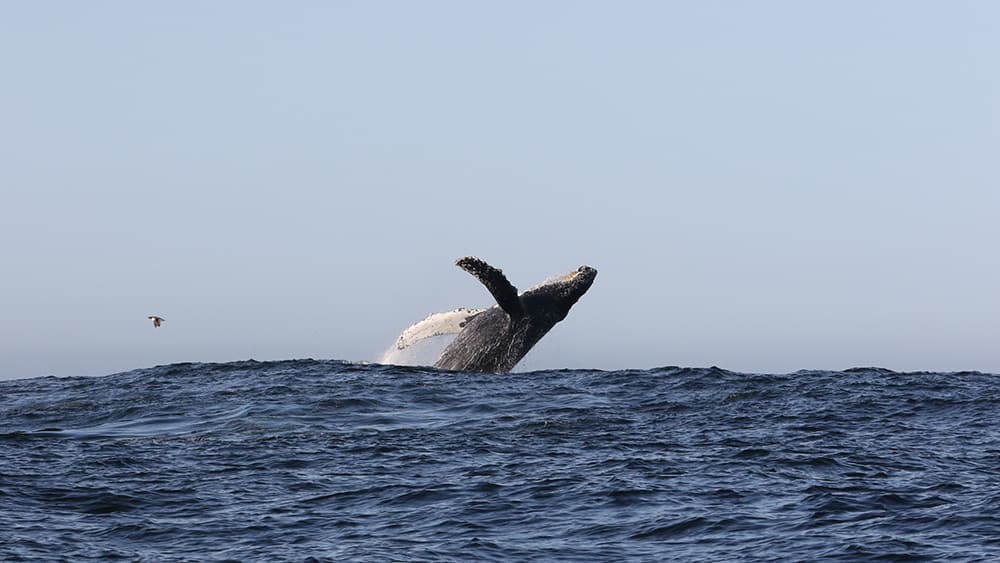
Most humpback whales go through an intense seasonal migration, traveling thousands of miles between their summer feeding grounds and their winter breeding grounds. Winter breeding grounds are typically in warm, clear waters, where whales can mate and calve with relatively few natural predators nearby. In contrast, summer feeding grounds are located in cold, nutrient-rich waters, where the whales can find plenty to eat. Olympic Coast National Marine Sanctuary provides a rich feeding ground from late spring through early fall for humpback whales from three different breeding grounds (Hawai’i, Mexico, and Central America).
When scientists listen to humpback whales, they sort the vocalizations they hear into two different categories: song and non-song calls. Songs show a clear structure, with smaller repetitive units called “phrases” organized into larger “themes” which tend to occur in a specific sequence. Imagine that a humpback’s song is like a poem: each “phrase” is like a line of the poem, and each “theme” is like a stanza. When multiple themes (or stanzas) are arranged together in a specific sequence, that is a song (or a poem). While all humpback whales can vocalize, scientists believe only males sing, and their songs are most often heard in their breeding grounds. The second category, calls, includes all the non-song vocalizations that humpbacks make. Some call types have been associated with feeding or social behaviors. Unlike songs, calls are relatively short, and don’t have a repetitive structure.
In order to see sound, researchers use spectrograms一seen below一to compare the frequency and loudness of a recording.

Listen to humpback whale song in Olympic Coast National Marine Sanctuary
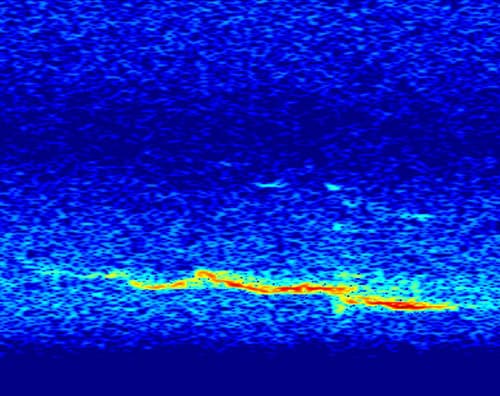
Listen to a humpback whale call in Olympic Coast National Marine Sanctuary
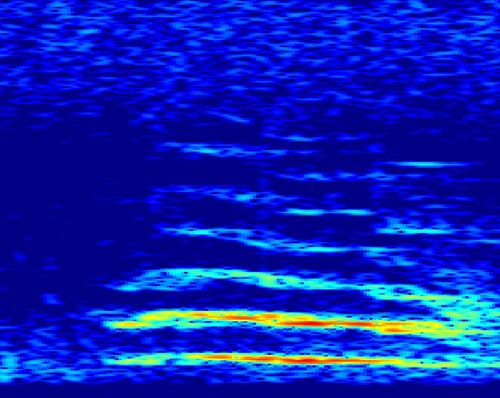
Listen to a humpback whale call in Olympic Coast National Marine Sanctuary
When male humpback whales sing in their winter breeding areas, scientists agree that song likely plays a role in mating behavior. While its exact function isn’t well understood, sound data shows that while in a particular breeding area, humpback males all sing the same current rendition of a song, and sometimes sing together in “choruses” where multiple individuals all sing at the same time. Adult male humpbacks can sing in sessions that last from five minutes to over 24 hours, repeating the same song over and over.
Humpback Whale Song in Feeding Habitats
Scientists once thought that humpback song only occurs in breeding grounds, but the last 50 years of underwater recordings have revealed that humpback males also sing in their feeding grounds, and during migration between breeding and feeding habitats. This begs the question: if humpback songs are important for mating, then why are males singing in their feeding areas, where food takes priority? “I was surprised by how much song we recorded in Olympic Coast National Marine Sanctuary– this sanctuary is the furthest away from the whales' breeding grounds, and yet song was still present for months at a time,” says Barkowski, who hopes that SanctSound data will help scientists answer questions like this one.
There are a number of hypotheses about why humpback males sing in their feeding areas, some of which are hotly debated amongst scientists. Some think that singing in the feeding area could be an extra opportunity for male whales to impress females or intimidate other males. Others think that humpbacks sing in their feeding areas to practice their songs, so that they are able to flawlessly recite the latest version by the time they arrive at their breeding ground for the winter. It’s also possible that the behavior is a side effect of changing reproductive hormones (namely, testosterone) or seasonal cues. Whatever the cause, data collected from the SanctSound project and other sources show that singing in the feeding ground is most common around the months that whales are beginning or ending their yearly migration to their winter breeding grounds. This relationship between migration and singing might provide scientists with a clue to understand the mystery of humpback whale song in Olympic Coast National Marine Sanctuary.
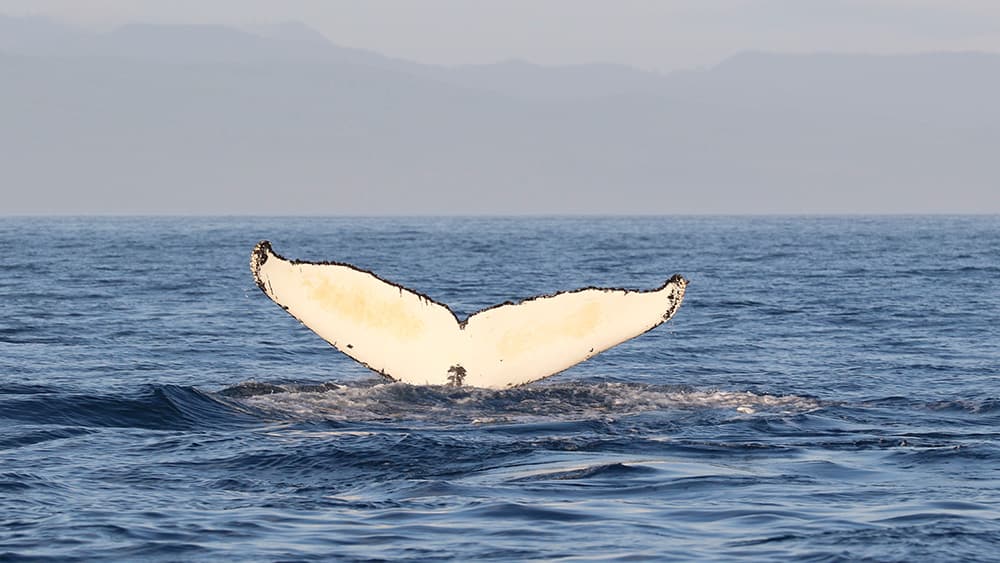
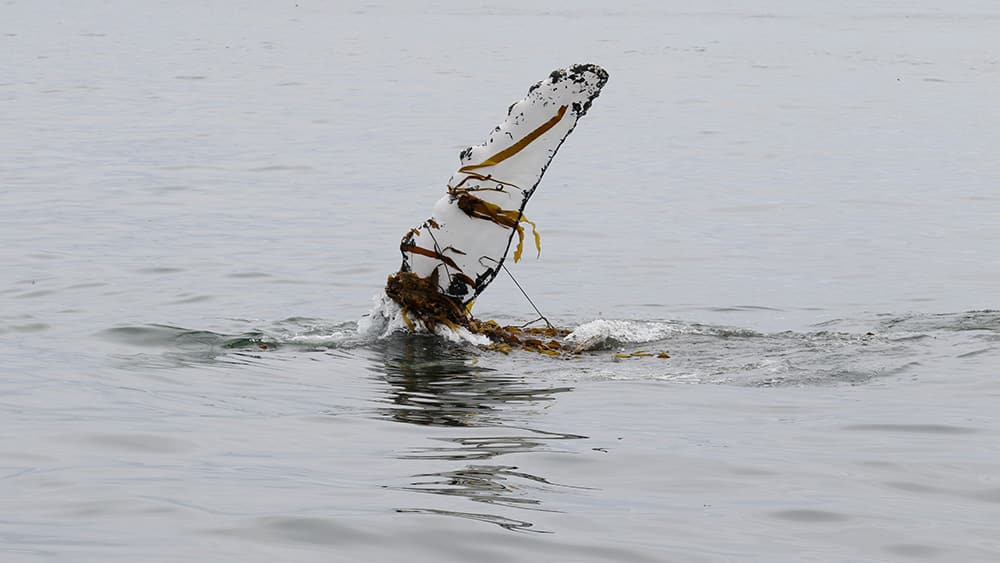
When asked what conclusions can be drawn about the purpose of humpback whale song in feeding areas, Barkowski is the first to admit there is much left to learn. However, with the help of long-term passive acoustic monitoring projects like SanctSound, scientists know more about humpback whale vocalizations than ever before. Barkowski remains determined, stating, “I want to know what these whales are saying to one another, and how we can use that information to help protect the threatened and endangered populations in the North Pacific.” Over the last five years, his journey as a marine scientist has already taken him around the world, but his story of unraveling the mysteries of humpback song has only just begun.
Anna Marchand is an AmeriCorps member serving as an environmental education and stewardship specialist at Olympic Coast National Marine Sanctuary.

